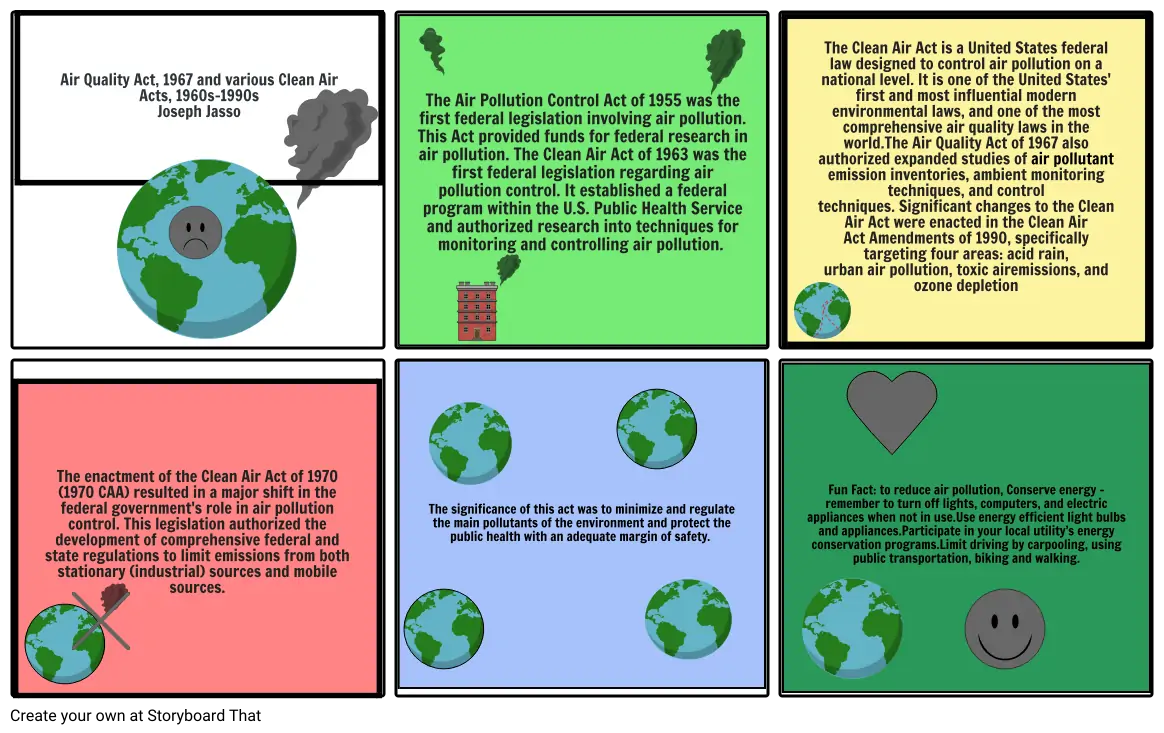Air quality Act

Siužetinės Linijos Tekstas
- Air Quality Act, 1967 and various Clean Air Acts, 1960s-1990s Joseph Jasso
- The Air Pollution Control Act of 1955 was the first federal legislation involving air pollution. This Act provided funds for federal research in air pollution. The Clean Air Act of 1963 was the first federal legislation regarding air pollution control. It established a federal program within the U.S. Public Health Service and authorized research into techniques for monitoring and controlling air pollution.
- The Clean Air Act is a United States federal law designed to control air pollution on a national level. It is one of the United States' first and most influential modern environmental laws, and one of the most comprehensive air quality laws in the world.The Air Quality Act of 1967 also authorized expanded studies of air pollutant emission inventories, ambient monitoring techniques, and control techniques. Significant changes to the Clean Air Act were enacted in the Clean Air Act Amendments of 1990, specifically targeting four areas: acid rain, urban air pollution, toxic airemissions, and ozone depletion
- The enactment of the Clean Air Act of 1970 (1970 CAA) resulted in a major shift in the federal government's role in air pollution control. This legislation authorized the development of comprehensive federal and state regulations to limit emissions from both stationary (industrial) sources and mobile sources.
- The significance of this act was to minimize and regulate the main pollutants of the environment and protect the public health with an adequate margin of safety.
- Fun Fact: to reduce air pollution, Conserve energy – remember to turn off lights, computers, and electric appliances when not in use.Use energy efficient light bulbs and appliances.Participate in your local utility’s energy conservation programs.Limit driving by carpooling, using public transportation, biking and walking.
Sukurta daugiau nei 30 milijonų siužetinių lentelių

